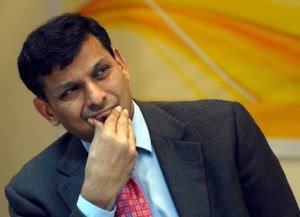Will Centre maintain status quo on RBI Guv.Rajan ?
 NEW DELHI: In a speech in July last, Raghuram Rajan, 53, had said: “The kind of economics we need is based on rigorous fundamentals — blood, sweat, tears, and toil.”One doesn’t know about the blood and tears bit, but 32 months into his term, Reserve Bank of India Governor Raghuram Rajan has surely walked the talk on the sweat and toil part.
NEW DELHI: In a speech in July last, Raghuram Rajan, 53, had said: “The kind of economics we need is based on rigorous fundamentals — blood, sweat, tears, and toil.”One doesn’t know about the blood and tears bit, but 32 months into his term, Reserve Bank of India Governor Raghuram Rajan has surely walked the talk on the sweat and toil part.
The former IMF chief economist, who remains an outsider in the eyes of his detractors — a figure of Davos rather than of Delhi — took over as RBI governor in September 2013 in the midst of India’s worst currency turmoil in two decades.
Since then, he has overcome several challenges to steer some of the most sweeping changes in the central bank’s history — from opening doors to new types of banks, fostering financial inclusion to cleaning up of bank books in a determined push to unearth hidden bad loans.
“One near-term issue for India is whether the world’s most articulate central bank governor, Raghuram Rajan, will be re-appointed when his term ends in September,” said Christopher Wood, managing director & equity strategist at CLSA, in the report GREED & Fear.
“A decision not to renew Rajan would create a lot of unhelpful noise, though in GREED & Fear’s view it would be a negative for the currency but an initial positive for the stock market since it would mean easier monetary policy,” Mr Wood said. From a long-term perspective, it would be positive if his term is extended, the report said.Radhika Rao, economist at the Singapore-based DBS Bank, said: “Most private polls expect Governor Rajan to receive an extension and we also fall in this camp.
His tenure has seen significant pluses and he is regarded as a credible policymaker, in India as well as in international circles.” But, decisions on the governor’s re-appointments were taken closer to the end of the term in the past and ongoing speculation is premature, she said.
Bad loans
Mr. Rajan’s move to clean up bank balance sheets has made banks bleed with record losses, which is being seen as a crisis.“People can debate the timing but there is no doubt that cleaning up of balance sheets was absolutely required. Postponing problems is not the right thing to do,” said Melwyn Rego, managing director and chief executive director, Bank of India.
Banks have now become cautious and are not lending as is evident from the shrinking balance sheets of many lenders,Also, if the country is to grow at 8 per cent, bank credit has to grow at 20 per cent, up from the current 10-11 per cent.The other issue is a structural one. Unless bank boards are reformed, no amount of balance sheet clean-up is going to be of any help, bankers said. Next is the issue of increasing competition in the banking sector.
Under Mr Rajan’s tenure, RBI has given licences to 23 new banks – two universal banks, 11 payments bank, 10 small finance banks. Questions are already raised over the business model of payments banks as the central bank has not allowed them to extend loans. Three holders of payments banks licences have dropped out.
Targeting inflation
Under Mr. Rajan, the central bank has moved towards a framework to target inflation. The move makes monetary policy rule-based and not discretionary. Despite positive reactions to this, the framework has been criticised, including by Mr. Rajan’s predecessor Duvvuri Subbarao on the grounds targeting inflation is not feasible in a country heavily dependent on the monsoon.
All four RBI governors before Mr. Rajan served a five-year term. Many economists said there should be no exception this time too, as Mr. Rajan’s job will be incomplete when his his three-year tenure ends in September.

